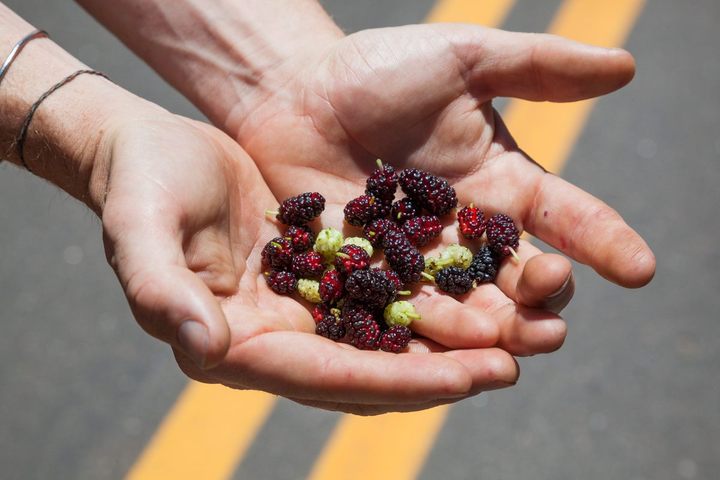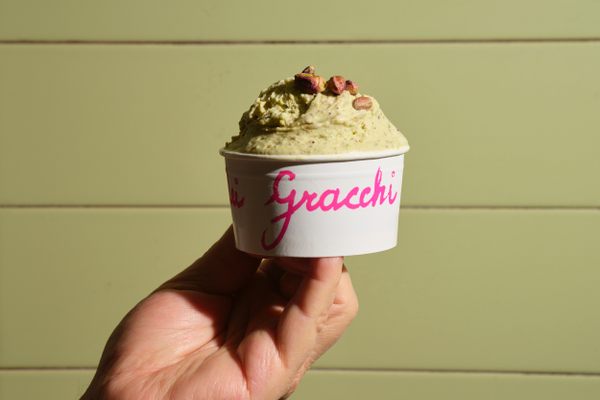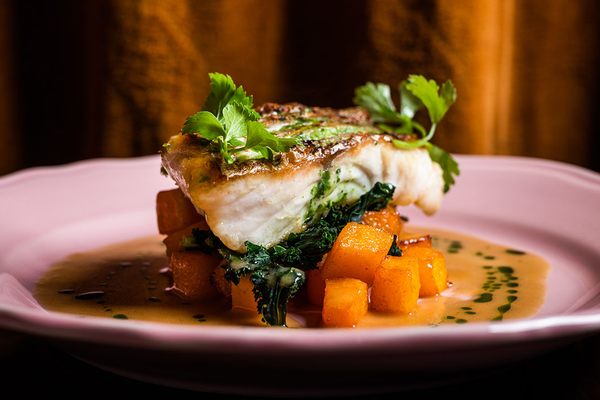As we move into the deepest part of winter, the team at Gastro Obscura is reflecting on warmer times. And nothing says warm weather like refreshing, summery fruit, a topic that we kept coming back to in 2023. This year, we highlighted peaches, citrons, Meyer lemons, and squash (which totally counts as a fruit)—not to mention Atlas Obscura’s story about early summer’s “strawberry moon.” From historic recipes to present-day curiosities, here are our favorite stories of the year that happened to be all about fruit.
This Website Reimagines Cities as Foraging Utopias
By Liz Susman Karp
If you live in a city, you might feel like foraging for wild edible plants is an activity that’s out of your reach. Enter Fallingfruit.org, an open-source map that charts edible plants in cities around the globe, allowing you to find lavender in empty lots or mulberries overhanging sidewalks. The creators and users of Falling Fruit spoke with Liz Susman Karp about the project, and how underutilized food resources hide in plain sight in urban environments.
How America’s Beloved Meyer Lemon Caused a Mid-Century Citrus Panic
By Mandy Naglich
Named for “plant explorer” Frank N. Meyer, who introduced it to the Americas from Asia along with many other crops, Meyer lemon has long been appreciated for its intense, complex fragrance and flavor. But the first Meyer lemons brought to the United States in the early 20th century carried a dark secret: They were asymptomatic carriers of a disease that could devastate other citrus varieties. Engineering a virus-free Meyer lemon took decades and almost resulted in the unique lemon’s eradication from Western orchards.

Make the Jellied Delicacy Served Aboard the Titanic
By Diana Hubbell, Associate Editor, Places
One of the last things ever served to first-class passengers on the Titanic was peaches. Poached in syrup, they were paired with vanilla ice cream and a brilliant green jelly made with Chartreuse liqueur. As explained by Titanic food expert Veronica Hinke, although first class ate more lavish fare than second- and third-class passengers, the Titanic’s food offerings were generous for the time, emphasizing the hopeful optimism that the ship once represented. Gastro Obscura has the recipe and the tragic history behind it.

The Strawberry Moon Marks a Sweet Start to Summer
By Rebecca Boyle
What is a strawberry moon? This striking celestial phenomenon does appear pinkish. However, the strawberry moon is not named for its color, but for the time when it appears, which coincides with the harvest season for strawberries. If you missed it this summer, Wondersky columnist Rebecca Boyle offered some tips for how to catch it the next time it appears.

How Poisonous Fruit Pits Became Irresistible to Humans
By Andrew Coletti, Gastro Obscura Editorial Fellow
The alluring sweet scent of bitter almonds and other stone fruit pits evolved as a warning to predators. “Don’t eat me!” the plant is trying to tell us. “I’m full of cyanide!” Yet humans have been ignoring this warning and appreciating the flavor of toxic fruit pits since prehistory, developing various ways over time to mitigate the risks. In September, I really enjoyed speaking with an expert on almond genetics, who helped me understand the science behind our millennia-long obsession and why some pits pose less danger than others.

Every Year, Rabbis Search Calabria for the Perfect Etrog
By John Last
In one small part of Calabria in southern Italy, largely Catholic farmers grow a unique variety of citrus that holds an important religious significance for Jews. The fragrant etrog or citron fruits grown here are shipped to Jewish communities worldwide, where they are used in celebrating the holiday of Sukkot as one of the “Four Species” that symbolize God’s dominion over the Earth. However, not just any citron will do for this important purpose, and growing fruit fit for a holy celebration is no easy task.
This Italian City is Obsessed with Squash
By Elena Valeriote
In October, while many in North America were choosing the perfect pumpkin to carve for Halloween, the inhabitants of Ferrara in northern Italy were reveling in their nickname of magnazoca, meaning “pumpkin eaters.” Pumpkins originated in the Americas and were first brought to Italy in the late 1400s or early 1500s. Since then, they have become a beloved part of local identity for the people of Ferrara, essential to many seasonal delicacies.
Gastro Obscura covers the world’s most wondrous food and drink.
Sign up for our regular newsletter.
























Follow us on Twitter to get the latest on the world's hidden wonders.
Like us on Facebook to get the latest on the world's hidden wonders.
Follow us on Twitter Like us on Facebook